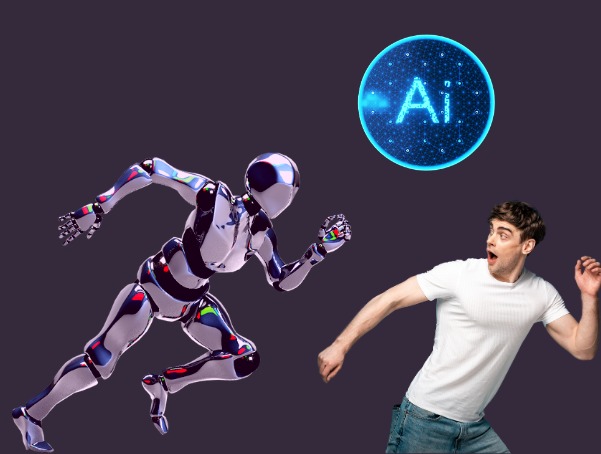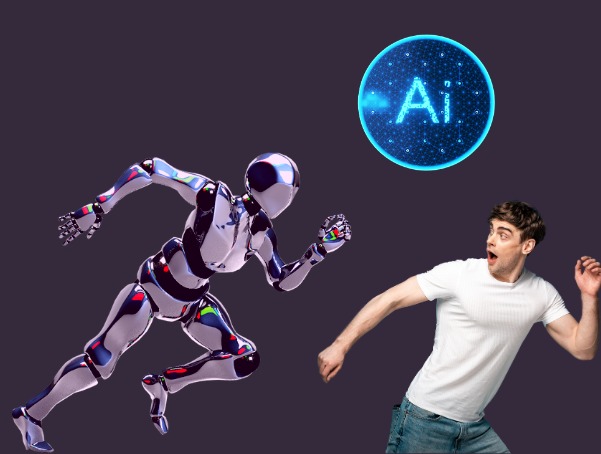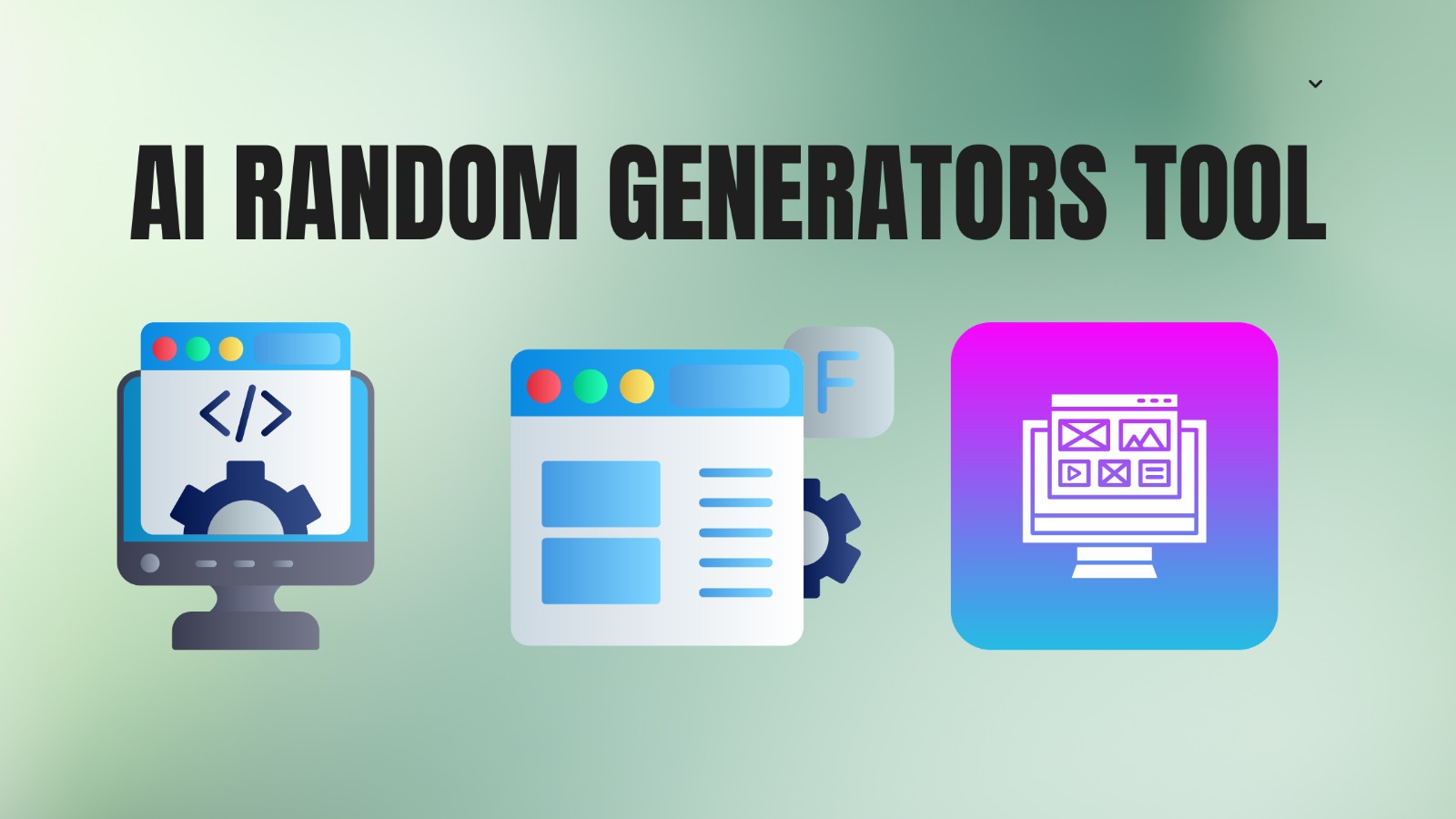How AI and Random Generators Are Powering the Next Wave of Creativity

Discover how AI and random generators fuel modern technology’s creativity, testing, and innovation. Explore real-world use cases and future trends. At this time, the world is ruled by algorithms; randomness is not opposition but a driving force. Chaotic elements quietly spark the innovation behind seemingly flawless technology. The number of tools is increasing every day.
From AI learning from unpredictable data, to video games maintaining excitement through varying outcomes—randomness drives creativity, discovery, and problem-solving in the digital landscape.
1. Could embracing chaos be the foundation of digital creativity?
This single concept has led to breakthroughs across science, coding, design, and art. Random processes force us beyond structured logic, unlocking innovation.
Today, platforms like MyRandomGenerator.com allow anyone to access creativity through randomness. Whether creating names, testing apps, or exploring ideas, MyRandomGenerator turns unpredictability into inspiration with one click.
2. What Are Random Generators and Why Do They Matter
Random generators are tools or algorithms that create unpredictable results, injecting chance into a digital world engineered for order.
In simple terms, a random generator is like a digital dice roller — instead of manually guessing or calculating, you let technology decide the outcome for you. But behind that simplicity lies a powerful engine used across industries for testing, research, gaming, cryptography, and innovation.
The Role of Random Generators in Technology
Randomness is crucial in technology because it removes bias and ensures fairness, uniqueness, and unpredictability — three elements essential for innovation.
- In data science, random sampling ensures unbiased testing and accurate results.
- In software development, developers use random numbers, IDs, and mock data to simulate real-world scenarios.
- In cybersecurity, strong random passwords and encryption keys protect sensitive information.
- In gaming and creative tools, randomness keeps experiences fresh, exciting, and different every time.
Common Types of Random Generators
Modern tools like My Random Generator make randomness practical for everyone, offering a variety of generators such as:
- Random Number Generators – For calculations, simulations, and data testing.
- Random Name & Email Generators – Perfect for creating identities or testing signup forms.
- Random Password Generators – To create secure, unguessable passwords.
- Random Color, Country, or Hobby Generators—This website has 60+ tools and is Ideal for designers, learners, and creators seeking inspiration.

Each type of generator serves a unique purpose — yet all share one common goal: to add unpredictability and authenticity to an increasingly automated digital world.
By breaking patterns, random generators inject authenticity and dynamism into technology. Randomness is essential—not optional—for secure, creative innovation.
-
The Intersection of AI and Random Generation
Artificial Intelligence may seem like the peak of precision — algorithms that learn, adapt, and predict accurately. But at its foundation, AI thrives on randomness. Without it, machines couldn’t learn efficiently, adapt creatively, or surprise us with innovation.
Random generation is crucial in how AI models are trained, tested, and improved. Introducing unpredictable data ensures systems remain flexible, unbiased, and capable of solving real-world problems rather than memorizing fixed patterns.
How AI Uses Randomness
- Model Training and Initialization
- Machine learning models begin with random initialization — assigning random weights to neurons before learning starts. This randomness helps models avoid bias and ensures that learning outcomes differ each time, improving adaptability and accuracy.
- AI-Generated Art and Music
- Every AI artwork, melody, or poem you see online often begins with a random seed. This seed introduces unpredictability into the generation process, allowing the AI to produce infinite creative variations — from unique paintings to original soundscapes.
- Simulations and Predictive Modeling
- In robotics, weather forecasting, and finance, AI simulations rely on random data inputs to test systems’ performance under unpredictable scenarios. Without randomness, AI would only work in ideal — not realistic — conditions.
- Gaming and Entertainment AI
- Ever wondered why games feel different every time you play? Gaming AI uses random generation to create new enemy behaviors, terrain layouts, and story outcomes, ensuring that no two experiences are identical.
From AI Labs to Everyday Life
What was once reserved for advanced programmers is now accessible to everyone. Online tools like My Random Generator bring that same creative power of randomness to daily users — developers testing their apps, students learning through discovery, and creators searching for inspiration.
These tools reflect the same principles that drive AI innovation: unpredictability, creativity, and endless possibility. The difference? You don’t need complex algorithms — just a click.
4. Real-World Applications of Random Generators
Random generators are powerful tools with practical uses across industries. Developers, designers, and educators use them to save time, spark creativity, and streamline workflows.
- For Developers: Testing and Simulation Made Easy
Developers use random generators to create mock data for testing. Tools like Random GUID, UUID, IP Address, Credit Card, and IMEI generators simulate real-world inputs without exposing sensitive data.
These generators enable applications to handle various data types correctly and enhance software robustness before launch.
- For Designers: Instant Creative Inspiration
Designers use Random Color and Hex Code generators for fresh color ideas.
Designers experiment with unpredictable palettes to break creative blocks and build engaging interfaces for branding, web design, or app UI.
- For Educators and Learners: Fun Tools for Discovery
Teachers and students rely on Random Equation, Language, and Country generators to make learning interactive.
These tools turn lessons into games, from exploring new countries to solving math challenges, making education engaging and informative.
- For Creators and Writers: Brainstorming Ideas with a Twist
Writers, content creators, and storytellers use Random Emotion, Hobby, and Job generators to brainstorm ideas for characters, plots, and blog topics.
By adding chance, creators find unexpected directions that fuel originality and depth.
- For Businesses: Data Generation for QA and Research
Businesses and researchers depend on random data generators for QA testing, data modeling, and simulation.
These generators let teams mimic real-world datasets, test algorithms in diverse conditions, and maintain data privacy while ensuring performance.
5. The Future of Random Generators: AI, Web3, and Personalization
As technology evolves, random generators move beyond simple tools, becoming more intelligent, adaptive, and deeply integrated into emerging technologies like AI, blockchain, and personalized web experiences.
- AI-Powered Randomness: Smarter, Not Just Random
Artificial intelligence is revolutionizing the way randomness is utilized. Instead of purely chaotic results, AI-driven generators blend randomness with learned patterns.
For example, AI-based random story or art generators can adjust outputs based on user preferences while introducing creative surprises — a balance between unpredictability and personalization.
- Web3 and Blockchain: Verifiable Randomness
In decentralized ecosystems, verifiable random number generation is increasingly critical for ensuring fairness and transparency.
Blockchain-based random number generators (RNGs) ensure unbiased results for applications such as NFT drops, gaming rewards, and cryptocurrency lotteries.
This concept, “provably fair randomness,” guarantees that no party can manipulate outcomes, which is vital for user trust in Web3 projects.
- Personalized Random Generation: Tailored Chaos
The next generation of online random tools will be both random and personalized.
Imagine a random recipe generator that adapts to your dietary needs, or a random workout generator that fits your fitness goals.
By combining AI insights with user data, these systems will deliver spontaneous and relevant randomness, giving users the best of both worlds.
- Integration into Everyday Apps and Devices
Random generation will increasingly shape user experiences from mobile apps to IoT devices.
Voice assistants may use randomness to suggest new ideas or routines, while education apps may gamify learning through dynamic, randomized challenges.
This deep integration will make randomness not just a feature — but a foundation for discovery and innovation in digital life.
6. The Role of Randomness in Creativity and Innovation
In my opinion, Randomness is a hidden driver of human creativity, often sparking breakthroughs in art and science through unpredictability.
- Sparking New Ideas
Writers, designers, and creators often face “blank-page syndrome.” Random prompts—such as an emotion, location, or character—can unlock inspiration.
A random name generator helps writers create unique characters, while a random color generator provides designers with unexpected, beautiful palettes.
Randomness pushes us beyond comfort zones, encouraging creative risks and new perspectives.
- Preventing Bias in AI and Decision-Making
In artificial intelligence, randomness is crucial in ensuring fairness and objectivity.
Random dataset sampling prevents any single pattern or bias from dominating model training, enabling more accurate and fair AI predictions.
Controlled randomness in group decision-making—like brainstorming or selection—helps teams consider overlooked ideas.
- The Creative Paradox: Order Through Chaos
Randomness is paradoxical: order emerges from chaos.
Embracing randomness enables innovators to discover hidden patterns and solutions that planning might overlook.
Randomness in generating art, data, or solutions transforms uncertainty into innovation.
7. Future of Random Generator Technology
The future of randomness is intelligent, transparent, and user-centric — powered by AI, blockchain, and data-driven personalization.
- The Merge of Random Data and AI
As artificial intelligence advances, random generation will become increasingly more innovative and more contextually relevant.
Future generators will utilize user behavior and preferences to balance spontaneity and relevance, much like AI-curated playlists or writing prompts tailored to mood.
- Blockchain and Verifiable Randomness
Verifiable random functions (VRFs) will redefine trust and security in gaming, lotteries, and decentralized finance.
Blockchain ensures that randomness is provable and tamper-proof, building confidence in systems where fairness is non-negotiable.
This will expand applications in crypto gaming, NFT minting, and Web3-based simulations.
- Simulation, Gaming, and Education
Random generators create lifelike unpredictability in simulations and games — from virtual environments to opponents’ behavior.
In education, they inspire curiosity: random country, quiz, or equation generators make learning interactive and exploratory rather than routine.
- The Next Step: AI-Driven Customization
Websites are leading the charge by making randomness simple and accessible.
AI-driven tools will let users shape randomness to their needs, blending creativity, fairness, and functionality into every click.
8. Conclusion – Embracing the Beauty of the Unexpected
In an increasingly structured digital world, randomness reminds us of the beauty of the unexpected. It breaks patterns, sparks creativity, and opens new doors of innovation — whether in AI development, design inspiration, or creative storytelling.
Embracing randomness isn’t about losing control; it’s about allowing creativity to flourish where logic ends. The most groundbreaking ideas often emerge from moments of unpredictability — a random thought, a new combination, a surprising connection.
So, if you’re ready to think differently, experiment fearlessly, and rediscover inspiration, start small.




